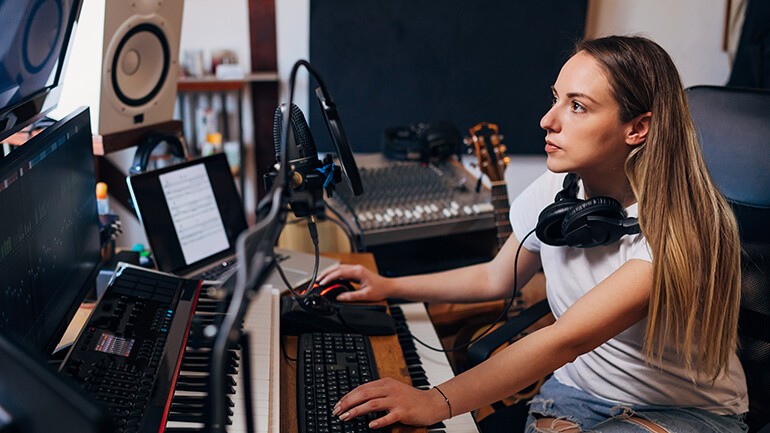Recording Formats Revisited
Catching up on what’s available—and preferably affordable—for the home-based tracking population

Anyone born during the digital era may not fully appreciate just how far we’ve come in terms of having good-sounding, affordable recording apparatus at our disposal. Where old analog machines offered four tracks at best and were subject to tape hiss and other anomalies, today even the most plain vanilla multitracker allows you to produce decent demos for literally a fraction of the cost (and space).
Whether mousing on a laptop or mixing on a control surface, here is a current roundup of what’s available for the home-based population, from the all-in-one simplicity of a DAW software application, to standalone multitrack recorders with traditional faders and digital connectivity, plus more.
Starting small. If you move around a lot and want to capture ideas on the fly, then a handheld or field recorder might be a good fit. In addition to offering convenience and portability, even the smallest units can sport a minimum of four mic inputs along with multiple headphone connectors, making them useful for both small-group and solo work. All of these models can transfer data via USB, allowing you to mix, add effects or offload to a mainstay recorder once back in the studio.
Software solutions. Recording to a computer-based DAW software program remains the preferred choice for many users, and it’s easy to see why—packages like Abelton Live, Steinberg Cubase and Avid Pro Tools provide virtually unlimited tracking space, sophisticated editing capability along with a generous array of sound-processing tools and plugins for giving your work a professional veneer. There are some caveats, however—for one you’ll need to have ample processing power in order to avoid clogs and crashes, along with a basic interface for microphone and instrument connections. And unless you’re into mousing all of your mixing, you’ll also want some kind of fader-operated control surface for managing your maneuvers manually.
Standalone multitrackers. The format that launched the whole home-studio revolution decades ago, all-in-one multitrack recorders combine the efficiency of DAWs with the tactile functionality of a traditional mixing surface. These days digital multitrackers come in a variety of shapes and sizes, with even the smallest boxes including built-in effects cards and upwards of 24-track recording capability, making them a plausible alternative to the aforementioned handhelds. The trade-off is that you’ll typically have fewer channel faders than recording tracks, making it necessary to use a menu system (displayed on a teeny backlit LED) to reassign faders as well as adjust channel pans and EQ settings. By comparison, many larger-format multitrackers provide a dedicated fader per track plus advanced features like signal routing, on-board mastering, and, as you move up the food chain, full-on automation and other professional features.
The hybrid approach. Designed for those want everything at their fingertips while still staying digitally connected, so-called “hybrid” models act as an analog-styled mixer, multitrack recorder and digital interface rolled into one. Like many of their counterparts, hybrids can write directly to a built-in micro-SD card, allowing you to store hours of music without going outside of the box if you so choose; you can subsequently drop the card into a computer (or connect via USB) and transfer the tracks for editing and processing, then move them back to the recorder once complete. Additionally, hybrid boards tend not to skimp on inputs, making them particularly handy when recording with a group of players either in the studio or on stage.
With so many different formats available, it’s a good idea to assess your specific needs before purchasing. Some things to consider include total number of available inputs, how many tracks can be recorded/played back simultaneously, the ability to connect to/control a computer-based DAW program, as well as availability of virtual tracks. While pricing can range from just a few hundred bucks for the most basic boxes to several thousand and up, don’t buy more recorder than you need. If you mainly work on your own, a couple of inputs and some decent processing/editing software may be good enough for now, allowing you to allocate funds for microphones, connectors, and other parts of the all-important signal chain.






Community
Connect with BMI & Professional Songwriters